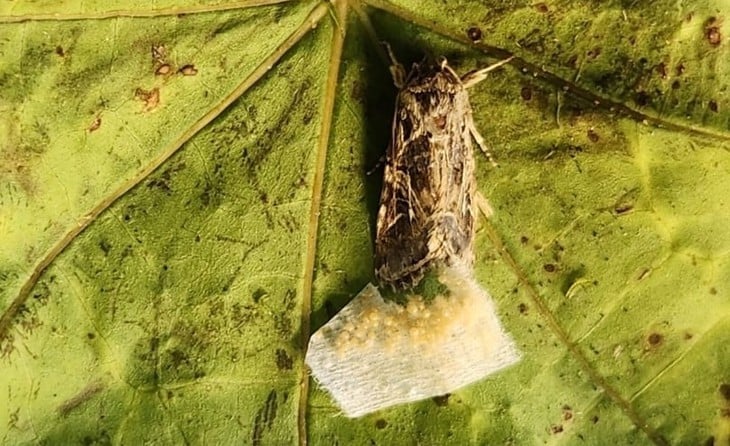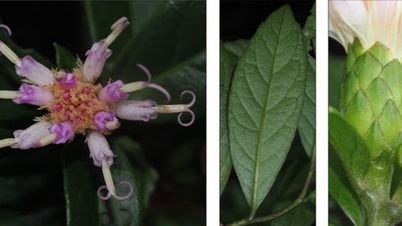
A female moth lays eggs on a leaf - Photo: Dana Ment, Volcani Institute
Two years ago, Professor Yossi Yovel (Department of Zoology) and Professor Lilach Hadany (Department of Plant Sciences and Food Security) at Tel Aviv University, Israel, first documented the phenomenon of trees "talking" by emitting sounds similar to popcorn popping - one sound per hour in healthy trees and dozens of sounds when the trees are stressed, such as when the soil is dry.
After that discovery, the question was: Who could hear these sounds?
Scientists have long known that moths can hear ultrasonic sounds beyond the range of human hearing. In the latest study, published in the journal eLife, scientists discovered that female moths prefer to lay their eggs on quiet, healthy plants rather than those that make a “screaming” sound.
Having shown that plants can make sounds, the team hypothesized that animals that can hear these sounds would respond and make decisions based on them, said Professor Yovel. "We focused on female butterflies because they need to choose the ideal place to lay their eggs - healthy plants that can support the larvae when they hatch," added Professor Hadany.
In the first experiment, female moths of the species Spodoptera littoralis (African cotton leaf miner) were released into space with two tomato plants – one fresh in moist soil and one in dry soil. The results showed that the moths preferentially laid their eggs on the fresh plant.
The second experiment was conducted without real plants, just with recorded sounds from stressed plants coming from one side. Females chose to lay near the sound, suggesting that they recognize the sound as a sign of plant presence.
In the next step, the butterflies' hearing is disabled. As a result, they have no clear preference for where to lay their eggs, demonstrating that sound is the key factor.
In another experiment, when two healthy tomato plants were placed on either side and a speaker playing the sound of the “stressed” plant was placed on one side, moths chose the plant with no sound – perhaps using scent cues to determine which was the real plant.
To test whether the butterflies’ response was specific to plant sounds, the researchers added male butterflies (which emit ultrasonic sounds) to one side, but separated them in mesh cages. The females laid eggs regardless of which side, suggesting that their response was specific to plant sounds.
The researchers also note: "The sounds emitted by drought-stressed plants may be secondary signals, not 'signals' in the biological sense of communication, that is, they have not evolved to convey information to insects." Therefore, this interaction cannot be considered "communication" in the strict sense.
Scientists say this research is just the beginning. Sound interactions between plants and animals certainly exist in many forms and play many roles. It is a vast and potentially exciting area of exploration .
Source: https://tuoitre.vn/phat-hien-con-trung-co-the-nghe-cay-coi-noi-chuyen-20250715192530572.htm







![[Photo] Cat Ba - Green island paradise](/_next/image?url=https%3A%2F%2Fvphoto.vietnam.vn%2Fthumb%2F1200x675%2Fvietnam%2Fresource%2FIMAGE%2F2025%2F12%2F04%2F1764821844074_ndo_br_1-dcbthienduongxanh638-jpg.webp&w=3840&q=75)



















![[Video] Digital system for managing science and technology tasks](https://vphoto.vietnam.vn/thumb/402x226/vietnam/resource/IMAGE/2025/12/04/1764810148741_1764673678503-jpg.webp)




































![[VIMC 40 days of lightning speed] Hai Phong Port determined to break through, reaching the target of 2 million TEUs by 2025](https://vphoto.vietnam.vn/thumb/402x226/vietnam/resource/IMAGE/2025/12/04/1764816441820_chp_4-12-25.jpeg)


































![[Photo series] Panorama of Long Thanh Airport before inauguration day](https://vphoto.vietnam.vn/thumb/402x226/vietnam/resource/IMAGE/2025/12/04/1764822152985_anh_8_20251204103350_20251204110421.jpeg)














Comment (0)